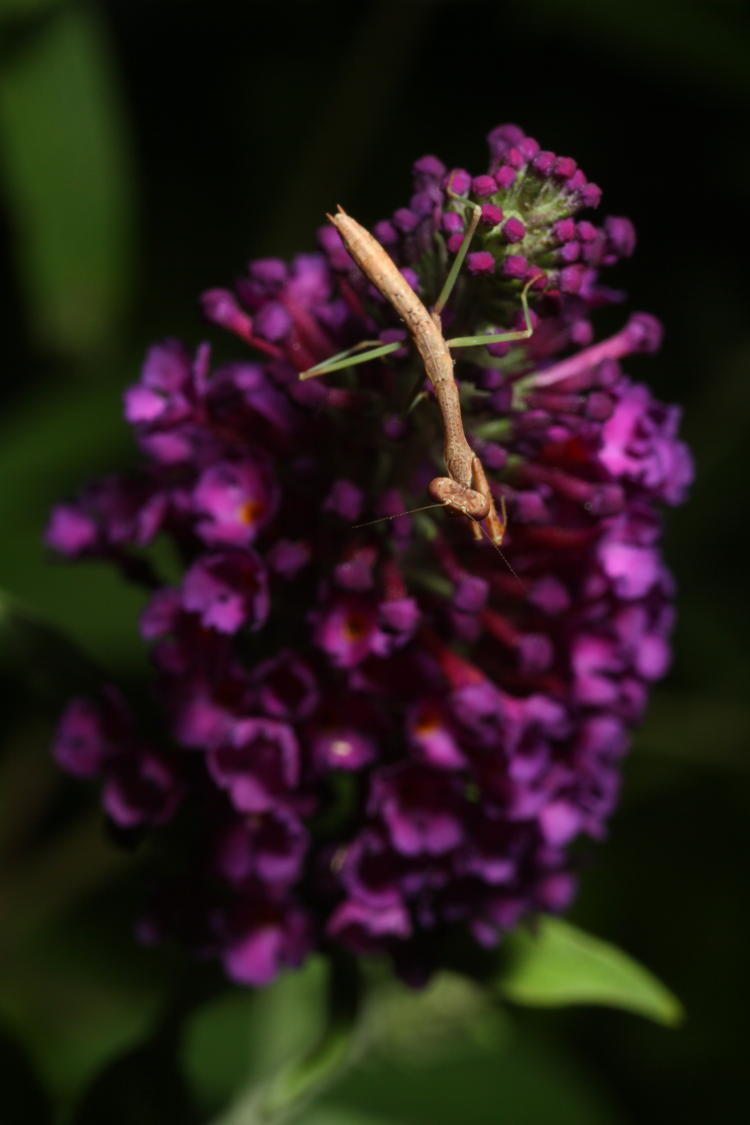
As the Chinese mantises have been molting into final instar, which means reproducing adult phase, they have abandoned the plants with smaller leaves and hiding spots, relinquishing them to the smaller, later developing Carolina mantises (Stagmomantis carolina.) And of course, among the prime choices for these are the butterfly bushes (Buddleia davidii,) which produce plenty of pollinator-attracting flowers all summer long. The Black Knight variety, the biggest and healthiest in the yard, hosts two such mantids of slightly different size, which I photograph occasionally. They’re both small enough to hide among the leaves easily, and better camouflaged than the Chinese mantids, so spotting them is occasionally challenging – except when they perch against the blooms themselves.
Coming back from stalking the green herons at the nearby pond the other day, I stopped by the bush and was rewarded with the appearance of a skipper, a family of butterfly with distinctive ‘X’ wings – there are too many species alike in appearance to pin this one down, but this might be a fiery skipper (Hylephila phyleus) – or it might not.
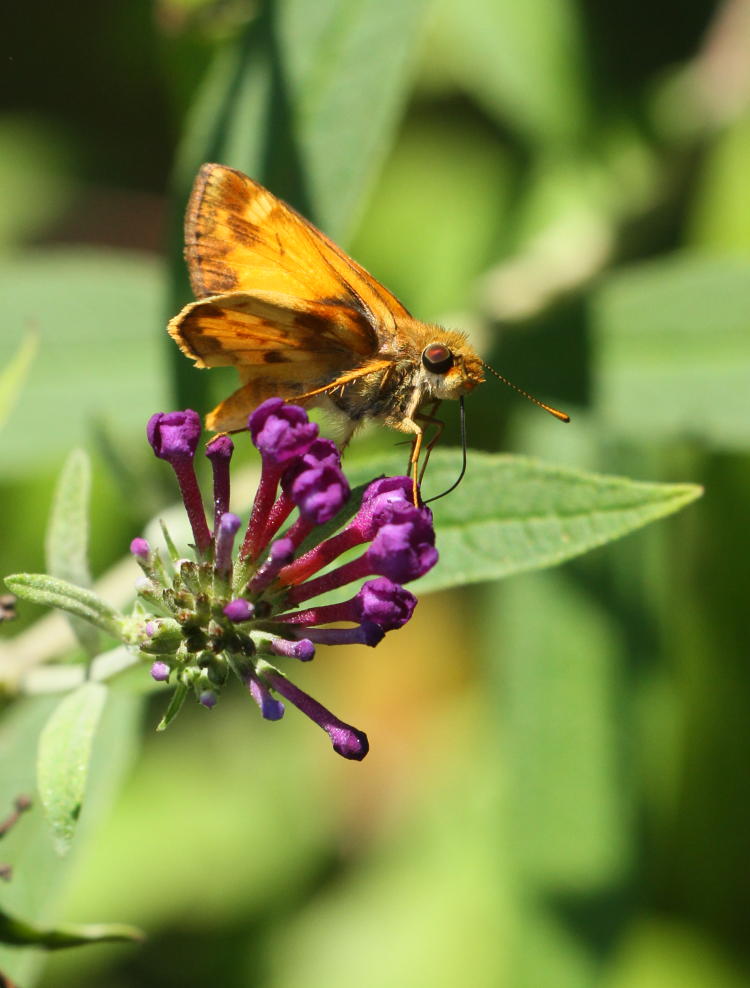
I didn’t have the macro lens affixed and had no time to change much of anything, so I was shooting with the 18-135 on autofocus – not bad, but not ideal, and a little prone to focus wandering when you get circumstances such as… but let’s not get too far ahead.
Once the skipper switched from one of the bigger bloom clusters to this barely-adequate one, it attracted some attention, from someone that I’m sorry to say I missed entirely – until it appeared in the frame.
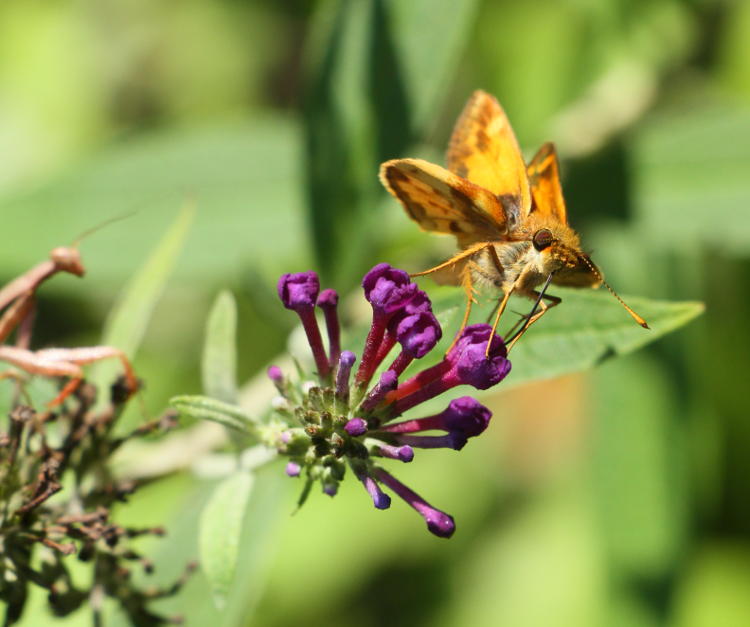
One of the Carolina mantises was making its move, and I watched with delighted anticipation, camera ready. Actually, I should say we watched, because The Girlfriend had joined me at this point and was witnessing it too.
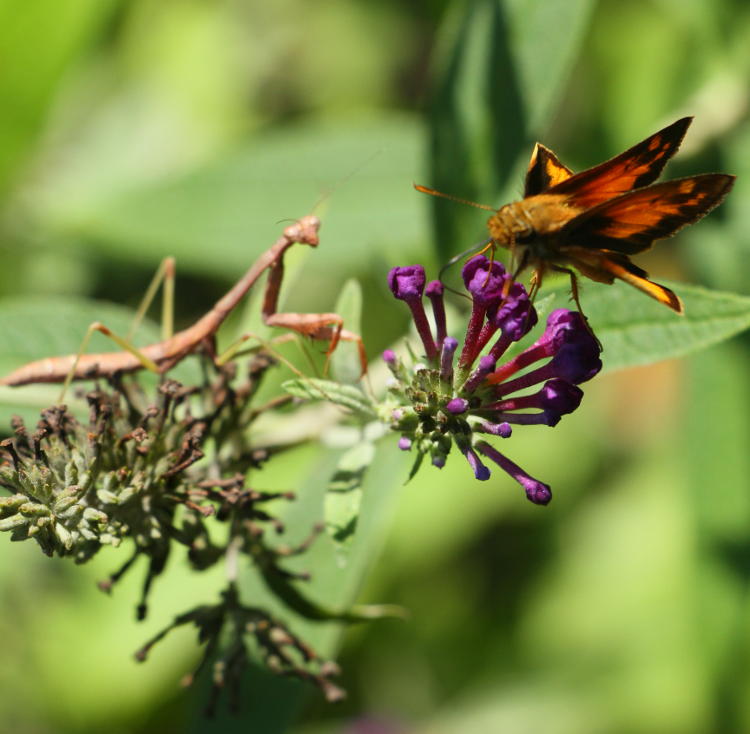
Perhaps it knew that skippers don’t wait around long, perhaps it was inexperienced, perhaps it’s simply the manner of Carolina mantids, but this one was moving in surprisingly fast, since I’ve seen Chinese mantids stalk insects with glacial slowness. It was clear we didn’t have long to wait.

Unfortunately, even with the aperture at f8, the depth was short and my focusing point in the viewfinder was falling between the two, with no time to correct it – the strike was imminent. I just kept shooting, twitching the camera to try and get the best focus.
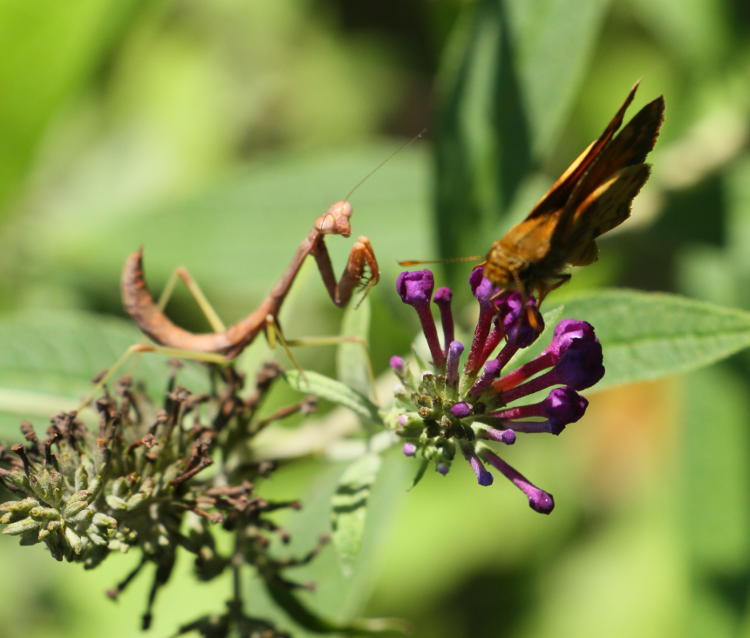
The distance separating them was now less than 20mm, and the skipper seemed to notice the mantis, because the wings changed position. We’d gone from a mantis stalking an oblivious butterfly to a race to see who would react the fastest.
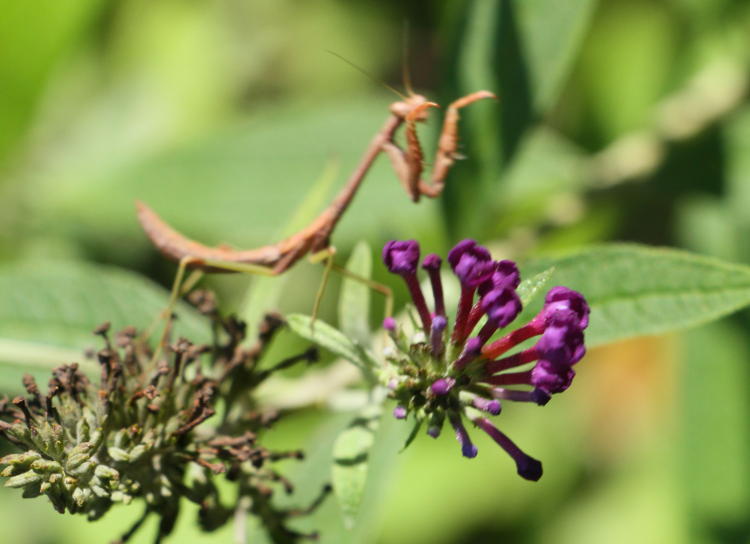
It was the skipper, flitting away in a fraction of a second even as the mantis struck, leaving the frame entirely. The action pose here just seems to indicate that mantids are clumsy and slow – it would have been nice to at least have a blur from the butterfly in here, but no.
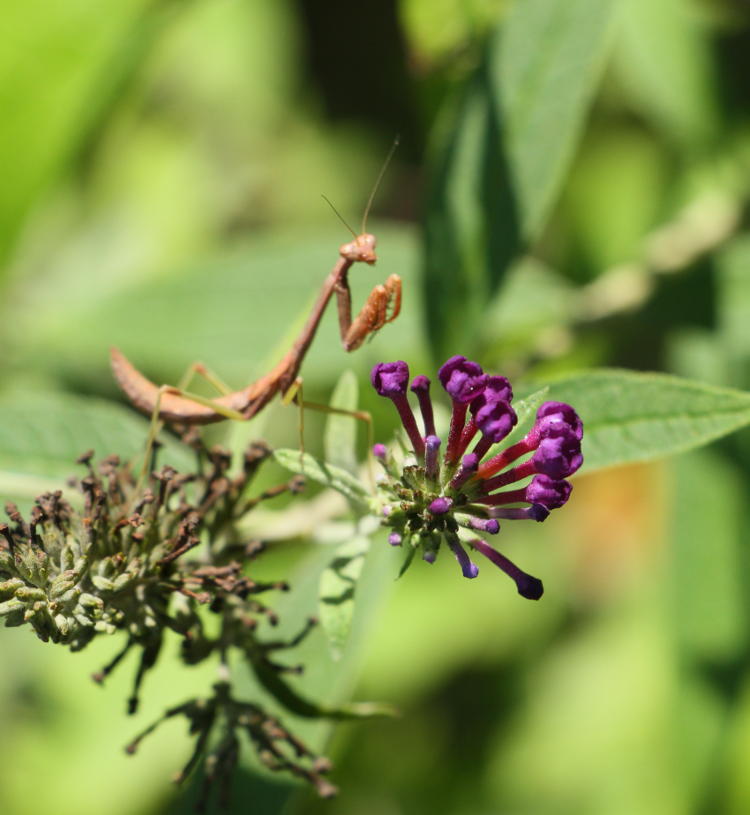
And the mantis paused there for a few moments, allowing us to try and fill in its thought processes with what we imagine it must be feeling, even though the chances are great that it’s feeling nothing but a natural instinct to hold still in case the butterfly reappears – or even to hold still because that’s what they do most of the time anyway. Regret, frustration, even a resolve to learn from this and do better next time? Not likely. There is quite likely some emotion-analog going on in there, the kind of thing that makes arthropods pursue their survival, and while we may speculate that it’s rudimentary (because their brains are exceedingly simple and they really don’t need anything too sophisticated, so natural selection would steer away from anything less efficient,) there’s also no way we’re likely to really know, either. Meanwhile, I missed a capture sequence that I’ve been after for a while, and will continue to pursue. Maybe next time it’ll be video…




















































